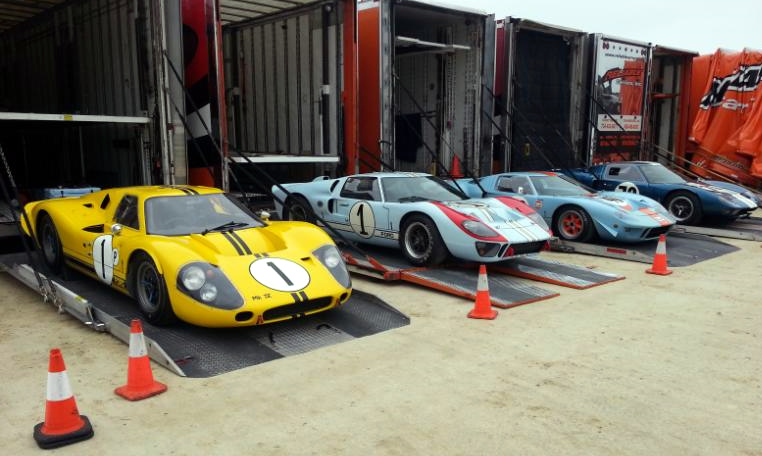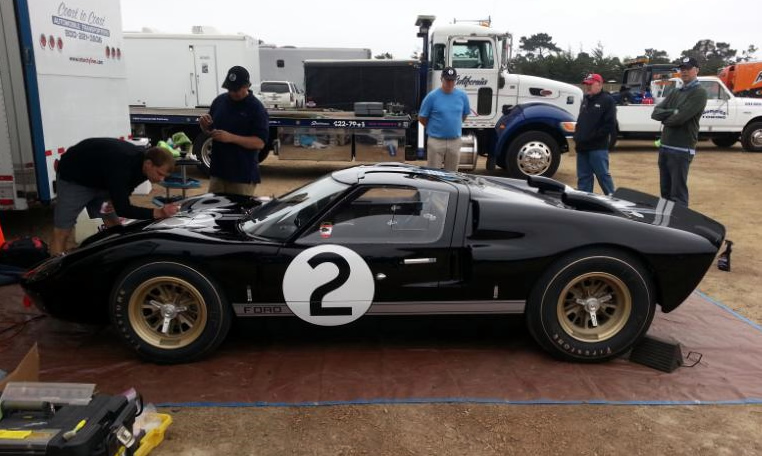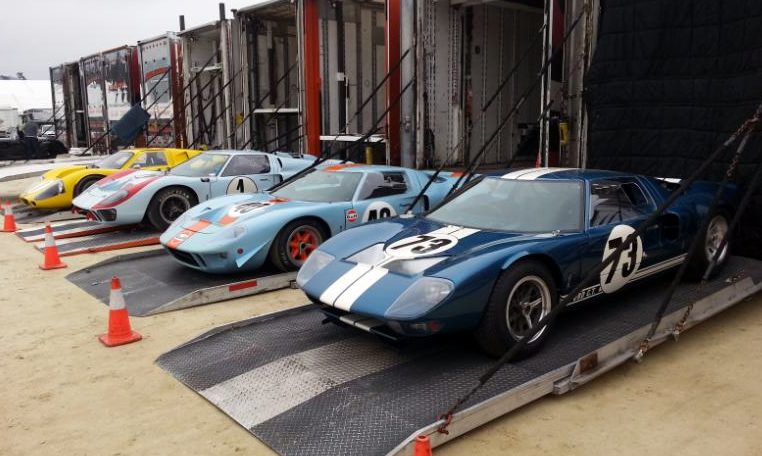Ford Performance landed in France this June with a proverbial force majeure: four new Ford GTs with full factory support. Their goal? Recreate the success of the original GT40, exactly 50 years after the historic 1966 LeMans 1-2-3 victory. Unfortunately, Ford’s arch nemesis Ferrari wedged itself into a 2nd place finish amidst much controversy.
The 1966 victory was not without controversy unto itself. After two troubling years of failing Collotti gearboxes, unstable aerodynamics, and sub-optimal fuel consumption, Carrol Shelby finally had the GT40 sorted. In Mk. II guise, the GT40 featured Ford’s legendary 427 engine and a more reliable ZF transaxle. For the 1966 event, three teams Shelby American, Holman-Moody, and Alan Mann Racing had Ford backing. This put EIGHT factory-backed Mk.IIs on the grid, not counting the FIVE Mk.Is entered by privateers. The drivers read like a “Who’s Who” list of racing legends: Bruce McLaren, Chris Amon, Ken Miles, Dennie Hulme, Ronnie Bucknum, Dan Gurney, Jacky Ickx, Graham Hill, Mario Andretti, and Mark Donohue. With a total of 13 entries and the world’s greatest drivers, victory was almost assuredly in Ford’s hands.
What a victory it was. With only 15 cars finishing out of 55 entrants, Ford managed their first 1-2-3 finish. By the last stint, Ford had victory in hand. Miles/Hulme were leading the race, with McLaren/Amon trailing not far behind. As opposed to letting their drivers “battle” for the remainder of the race, Ford made the call to instruct all drivers to preserve their cars. The plan was to have all three cross the finish line together. This would place Miles/Hulme in 1st, followed by McLaren/Amon 2nd, and Bucknum/Hutcherson 3rd.
Controversy struck almost immediately after that historic finish. The sanctioning body for the 24 Hours of Le Mans, the Automobile Club de l’Ouest (ACO), declared McLaren/Amon the winners. As both the 1st and 2nd place cars crossed the start/finish line at the same time on the lead lap, the win would be awarded to the vehicle which covered the greatest distance over the course of 24 hours. McLaren/Amon had started the race a mere 60 feet behind Miles/Hulme, and therefore were declared the victors.

Shortly after their victory at LeMans, Ford resumed development of the MK.IV stateside in anticipation of the new FIA “Appendix J” regulations. Eschewing the old MK.I/II chassis entirely, the J car was constructed using a bonded honeycomb tub and a revolutionary “bread van” aerodynamic package. In August of 1966, Miles lost control of the J car at Riverside due to the bread van aerodynamics proving unstable at speed. The honeycomb tub yielded and shattered upon impact. Unfortunately, Miles lost his life in the incident. Perhaps had it not been for Miles’ untimely demise, the controversy over 1966’s podium would be nothing more than a mere footnote in the GT40’s esteemed racing history.
Controversy notwithstanding, we at The Speed Journal recently had the opportunity to see the McLaren/Amon car (Chassis #P/1046) in person as it was undergoing final detail the day before it’s showing at the Pebble Beach Concours. Fresh off of a painstaking 2000+ hour restoration, 1046 was completed in time to witness Ford’s latest victory over Ferrari, exactly 50 years after 1046 took the checkered flag.
The restoration was nothing less than spectacular. Unlike today, “old” race cars were nothing more than outdated technology and unfortunately many met a less than ideal fate. In the case of 1046, it was relegated to life as a test mule, and eventual parts donor. Luckily, 1046 was eventually freed, and spent some time as a street car. That was after the owner added air conditioning and re-sprayed it in gold metal flake. Fortunately, it now sits in as-raced condition, with the utmost detail paid to authenticity. Not often does one have the opportunity to encounter a legitimate GT40 out in the wild, let alone one that stands as a cornerstone of Ford racing history.
Hemmings Article: The Ford GT40 Mk II that shouldn’t have won Le Mans in 1966 heads for restoration









